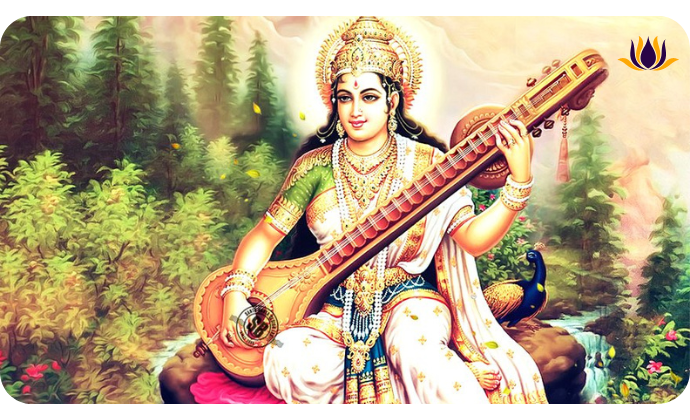Geet Vidya, often referred to as Indian classical singing, is a highly refined and complex form of music originating from the Indian subcontinent. It has evolved over thousands of years and encompasses two primary styles: Hindustani (predominant in North India) and Carnatic (associated with South India). Both styles share similarities, such as the emphasis on melody and rhythm, but have distinct characteristics that make them unique.
Fundamental components of Geet Vidya include:
- Shruti: The smallest musical intervals, akin to microtones, that form the foundation of the Indian classical music scale. Shruti is crucial in creating the tonal quality and emotional resonance of a raga.
- Swara: The seven basic musical notes (Sa, Re, Ga, Ma, Pa, Dha, Ni) that serve as the building blocks for melodies in Indian classical music. These notes can be further divided into twelve distinct pitches or semi-tones, allowing for a rich and diverse melodic framework.
- Raga: The melodic structure that forms the basis of Indian classical music. A raga consists of a unique combination of swaras, with specific rules governing their ascending (aroha) and descending (avaroha) sequences. Each raga is designed to evoke a particular emotion or mood, often associated with a specific time of day, season, or event.
- Tala: The rhythmic structure that organizes beats into specific patterns or cycles. A tala consists of a fixed number of beats (matras), grouped into smaller units called vibhags or angas. The interplay between the tala and the melody creates the complex rhythmic texture that characterizes Indian classical music.
- Alap: An improvised, unaccompanied introduction to a raga, showcasing the artist’s creativity and mastery of the raga’s nuances. The alap typically starts slowly and gradually builds in intensity, setting the stage for the main composition.
- Bandish: A pre-composed piece that serves as the foundation for improvisation. A bandish consists of a melodic line (sthayi) and lyrics (antara), often conveying spiritual, mythological, or romantic themes. The singer embellishes the bandish through improvisation, exploring the raga’s potential within the given tala.
Indian classical singers undergo extensive training under the guidance of a guru or master to develop their vocal techniques, voice culture, and breath control. They also learn the intricate grammar of ragas and talas, as well as the vast repertoire of compositions in various languages, such as Sanskrit, Hindi, Telugu, and others.
Performances typically involve a lead singer accompanied by instrumentalists, who provide melodic and rhythmic support. Common accompanying instruments include the tabla (percussion), sitar or sarod (plucked string instruments), and sarangi or violin (bowed string instruments). The music unfolds through a series of stages, starting with the alap, followed by the bandish, and culminating in an extended improvisational section that highlights the performer’s virtuosity and emotional depth.



Leave a Reply